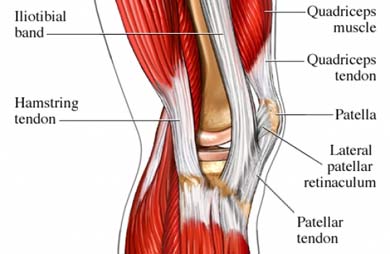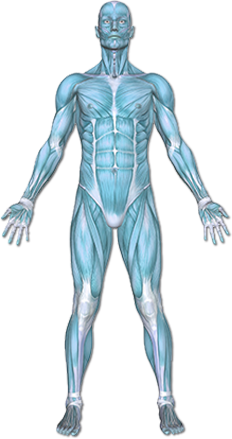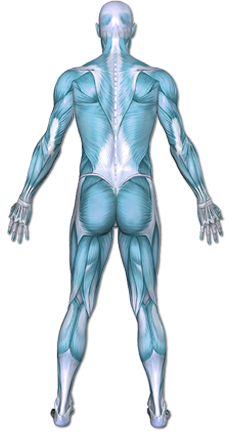Iliotibial Band Syndrome
Iliotibial band syndrome (ITBS) is an overuse injury. The injury happens in the soft tissues in the lower thigh, near the outside of the knee. The iliotibial band (ITB) is a thick band of fibrous tissue, running from the hip down the outside of the thigh and attaching to the tibia. The tibia is the large bone of the lower leg.
Treatment depends on the severity of the injury.


Copyright © Nucleus Medical Media, Inc.
This content was created using EBSCO’s Health Library
ITBS is caused by repetitive friction or rubbing of the iliotibial band against the bone on the outer side of the knee. This excessive rubbing can irritate the ITB itself and/or the tissue underneath. Causes of the excessive friction include:
- Structural abnormalities, such as a short, tight IT band
- Problems related to the foot, ankle, or hip
- Opposing muscle imbalances, such as the quadriceps being stronger than hamstrings
- A very prominent lateral femoral epicondyle, the bony structure on the outer side of the knee
- Inward rotation of the leg
- Angle where knee flexes
- Legs of different lengths
- Bowlegs
This content was created using EBSCO’s Health Library
Factors that increase your risk of getting ITBS include:
- Certain sports with repetitive motions, such as running and cycling
- Incorrect training technique
- Increasing distance run or cycling too quickly
- Running up and down hills
- Overtraining
- Using damaged or worn-out equipment or footwear
- Wearing improper shoes for a sport or athletic activity
- Athletic equipment that is not properly fit to the user
This content was created using EBSCO’s Health Library
Symptoms of ITBS include:
- Dull aching or burning sensation on the outside of the knee during or after activity
- Sharp stabbing pain on the outside of the knee during or after activity
- Pain in the hip, known as referred pain
- Progressive, worsening pain
- Snapping, creaking, or popping when the knee is bent and then straightened
This content was created using EBSCO’s Health Library
Your doctor will ask about your symptoms and medical history. In most cases, diagnosis can be made with a physical exam. Tests may include:
- Obers test—determines the tightness of the ITB
- Rennes test—specifies the area of pain while full weight is placed on the bent leg
- Nobles test—determines the area of pain while the leg is flexed at a certain angle
For images of the internal structure of your leg, your doctor may recommend an MRI.
This content was created using EBSCO’s Health Library
Talk with your doctor about the best treatment plan for you. Recovery time ranges depending on the grade of your injury. Physical Therapy treatment may include:
- Modifications to your running or biking routine to avoid stress on the knee
- Stretching the knee joint to keep it loose
- Exercises to strengthen the knee and hip and improve balance
This content was created using EBSCO’s Health Library
To reduce your chances of ITBS, take these steps:
- Learning proper training techniques
- Increasing mileage run gradually
- Wearing appropriate shoes for each sport
- Replacing athletic shoes as they show signs of wear
- Being aware of running surfaces
- Using properly fitted equipment
- Strengthening quadriceps, hamstrings, and gluteal muscles
This content was created using EBSCO’s Health Library
This content was created using EBSCO’s Health Library


